It often happens that a thing has a purpose, but most of are unaware of it. However, everything has a use. This is what we are going to show you in this review.
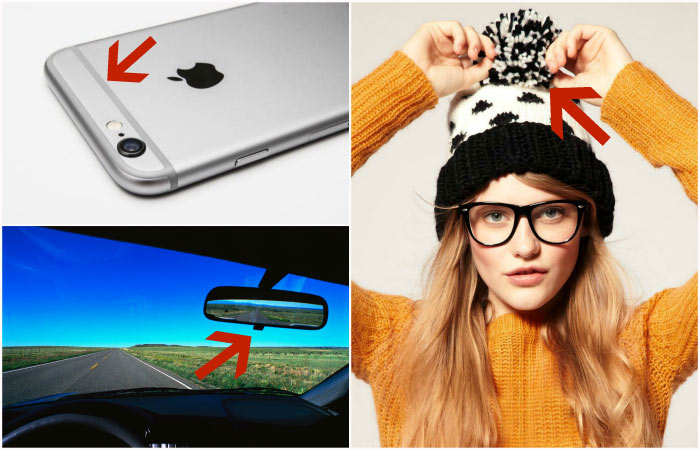
1. Pompons on hats
 Pompons on hats are now simply stylish accessories that only perform a decorative function. However, in the 18th century, pompons were sewn exclusively to sailors’ hats. In fact, the ships of that time had narrow rooms with low ceilings, and pompons were designed to protect the employees’ heads from hitting the overhangs. Later this detail started being used by soldiers to identify the type of troops.
Pompons on hats are now simply stylish accessories that only perform a decorative function. However, in the 18th century, pompons were sewn exclusively to sailors’ hats. In fact, the ships of that time had narrow rooms with low ceilings, and pompons were designed to protect the employees’ heads from hitting the overhangs. Later this detail started being used by soldiers to identify the type of troops.
2. The number on Heinz ketchup bottle
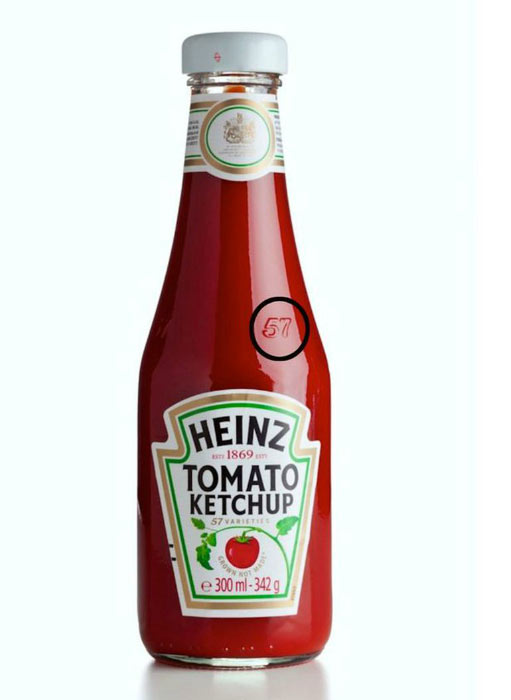 Anyone who has seen the packaging of the iconic Heinz ketchup, has certainly paid attention to the number 57, which decorates the label and the bottle. Some believe that it is the number of the products manufactured by the company. There is also a rumor that if you knock on the number on the label, the ketchup will flow much easier, but in fact the mysterious figure is just a marketing ploy. The company’s founder, Henry Heinz, was impressed by the shoe store advertisement that offered its customers “21 shoe styles” and decided to find the number for his company that will be remembered by consumers. First, he experimented with numbers 53 and 59, but eventually settled on the number 57.
Anyone who has seen the packaging of the iconic Heinz ketchup, has certainly paid attention to the number 57, which decorates the label and the bottle. Some believe that it is the number of the products manufactured by the company. There is also a rumor that if you knock on the number on the label, the ketchup will flow much easier, but in fact the mysterious figure is just a marketing ploy. The company’s founder, Henry Heinz, was impressed by the shoe store advertisement that offered its customers “21 shoe styles” and decided to find the number for his company that will be remembered by consumers. First, he experimented with numbers 53 and 59, but eventually settled on the number 57.
3. The hole in a lollipop stick
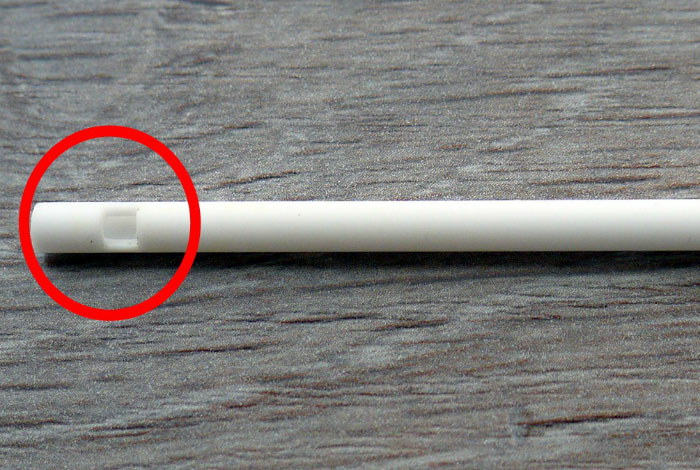 Many believe that the hole in a lollipop stick, like the cap of the pen, is designed to allow air in case of accidental ingestion. But in fact, this hole has a more practical purpose – to keep the lollipop in place without letting it subside.
Many believe that the hole in a lollipop stick, like the cap of the pen, is designed to allow air in case of accidental ingestion. But in fact, this hole has a more practical purpose – to keep the lollipop in place without letting it subside.
4. The switch on the rear view mirror
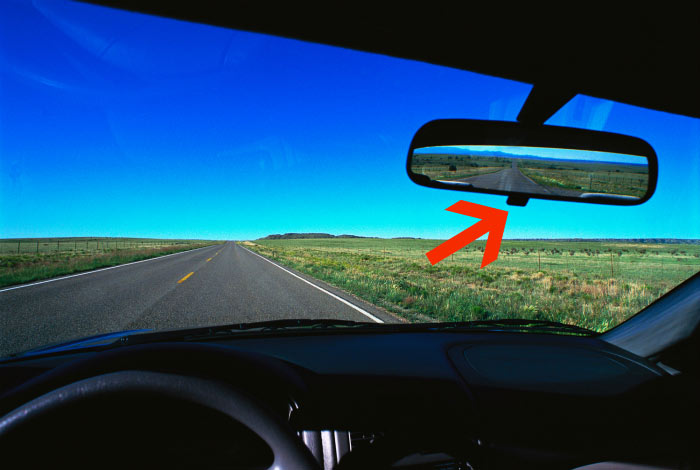 Not all car owners know that there is a switch at the bottom of the salon mirror that will change it into a night or day mode. The trick is that the rear view mirrors have dual-reflective coating, and the switch allows you to prevent the driver from being blinded by headlights.
Not all car owners know that there is a switch at the bottom of the salon mirror that will change it into a night or day mode. The trick is that the rear view mirrors have dual-reflective coating, and the switch allows you to prevent the driver from being blinded by headlights.
5. The leather patch on a backpack
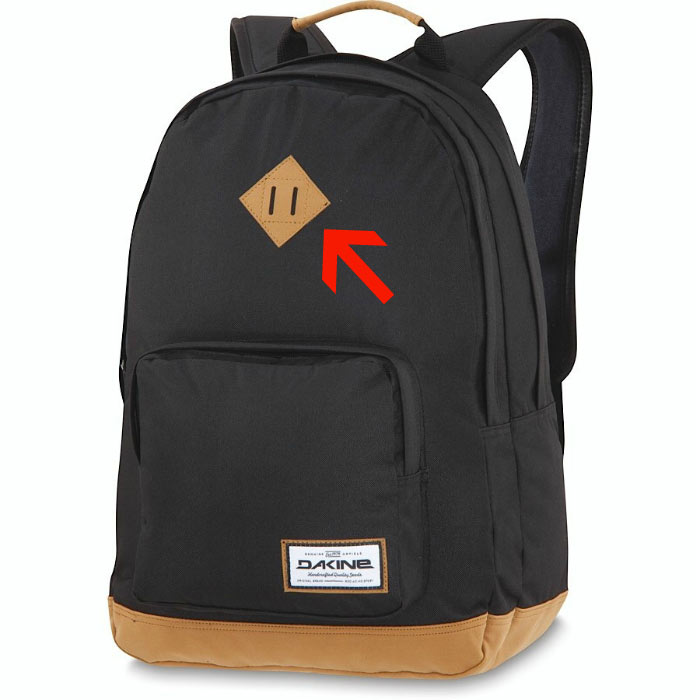 On the front of many backpacks, you can see small leather patches with holes or durable metal hinges. Uninformed buyers believe these items are only decorative elements. However, patches and hooks are actually designed to hold carbines, ropes, or any other camping equipment.
On the front of many backpacks, you can see small leather patches with holes or durable metal hinges. Uninformed buyers believe these items are only decorative elements. However, patches and hooks are actually designed to hold carbines, ropes, or any other camping equipment.
6. The holes on sneakers
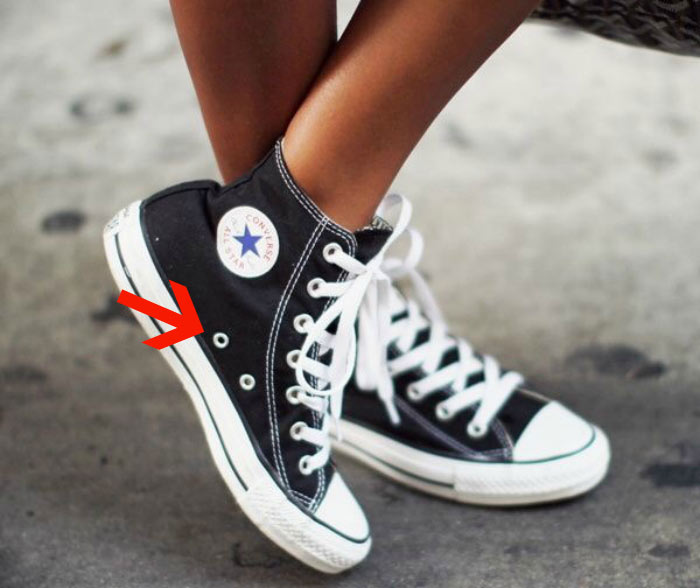 Each owner of sneakers must have paid attention to the mysterious holes at the base and wondered what they are needed for. In fact, these holes serve two purposes. First, they can be used for lacing, which will make the sneakers narrower and provide comfort to the feet, and second, the holes provide ventilation and prevent your feet from sweating.
Each owner of sneakers must have paid attention to the mysterious holes at the base and wondered what they are needed for. In fact, these holes serve two purposes. First, they can be used for lacing, which will make the sneakers narrower and provide comfort to the feet, and second, the holes provide ventilation and prevent your feet from sweating.
7. Holes on pot handles
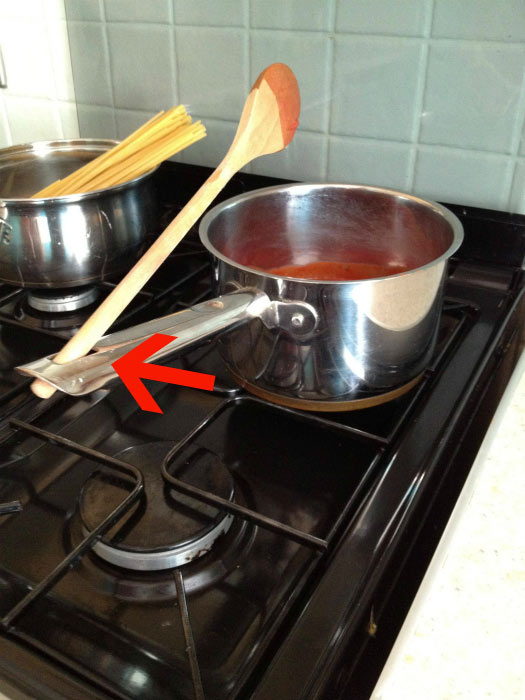 Holes on the handles of pots and pans are not simply design features, but quite practical elements. First and foremost, they are designed to hold spoons and skimmers during cooking. In addition, they allow you to hang large utensils.
Holes on the handles of pots and pans are not simply design features, but quite practical elements. First and foremost, they are designed to hold spoons and skimmers during cooking. In addition, they allow you to hang large utensils.
8. The hole in a ruler
 A mysterious hole in a usual ruler has a simple purpose. It can be used to hang the ruler on a nail or a hook.
A mysterious hole in a usual ruler has a simple purpose. It can be used to hang the ruler on a nail or a hook.
9. The rubber disk under the cap
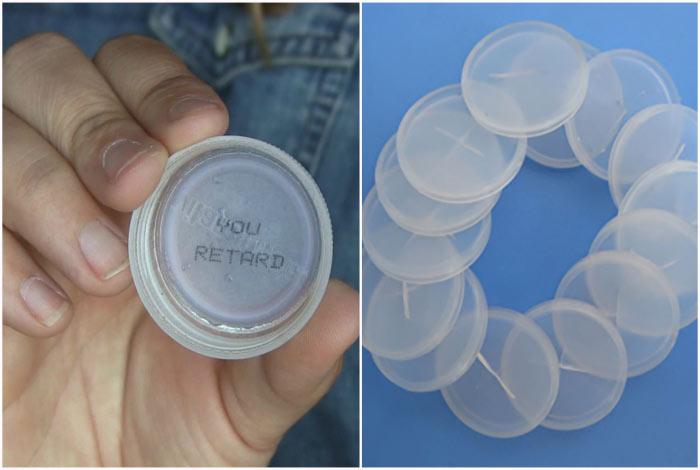 Many people mistakenly believe that a thin plastic or rubber disk under the cap of a soda bottle prevents the beverage from leaking. In fact, this disc allows you to keep the water-dissolved gas in place, which makes the drink fizzy.
Many people mistakenly believe that a thin plastic or rubber disk under the cap of a soda bottle prevents the beverage from leaking. In fact, this disc allows you to keep the water-dissolved gas in place, which makes the drink fizzy.
10. Rivets on pockets
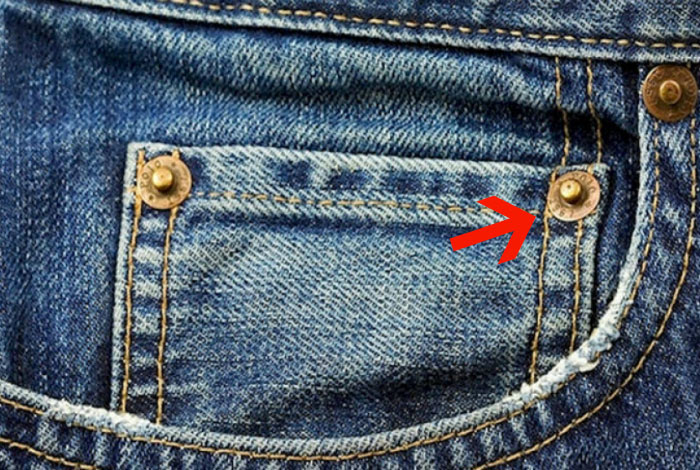 The history of the rivets on the pockets of jeans started in 1870. Back then, these pants were worn by diggers and gold miners who had to carry gold bars and heavy tools in their pockets. The pockets could not withstand such loads and were quickly torn. This kept happening until the resourceful tailor, Jacob Davis, invented copper rivets to make pockets more durable. In 1873, Strauss and Davis patented the right to manufacture jeans with rivets.
The history of the rivets on the pockets of jeans started in 1870. Back then, these pants were worn by diggers and gold miners who had to carry gold bars and heavy tools in their pockets. The pockets could not withstand such loads and were quickly torn. This kept happening until the resourceful tailor, Jacob Davis, invented copper rivets to make pockets more durable. In 1873, Strauss and Davis patented the right to manufacture jeans with rivets.
11. Creases on trousers
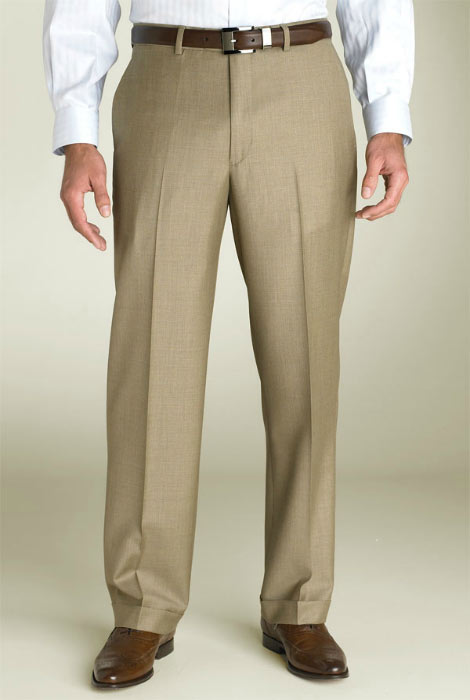 Creases appeared in the late 19th century. They were not a designer’s whim, but simply a practical need. In those days, most of the clothing manufactured in Europe were shipped to other countries. For the clothes to occupy minimum space, they were stacked and pressed in a special way. After such transportation, there appeared creases that were impossible to smooth out. A little later, creased trousers came into fashion.
Creases appeared in the late 19th century. They were not a designer’s whim, but simply a practical need. In those days, most of the clothing manufactured in Europe were shipped to other countries. For the clothes to occupy minimum space, they were stacked and pressed in a special way. After such transportation, there appeared creases that were impossible to smooth out. A little later, creased trousers came into fashion.
12. The cylinder on the charging cord
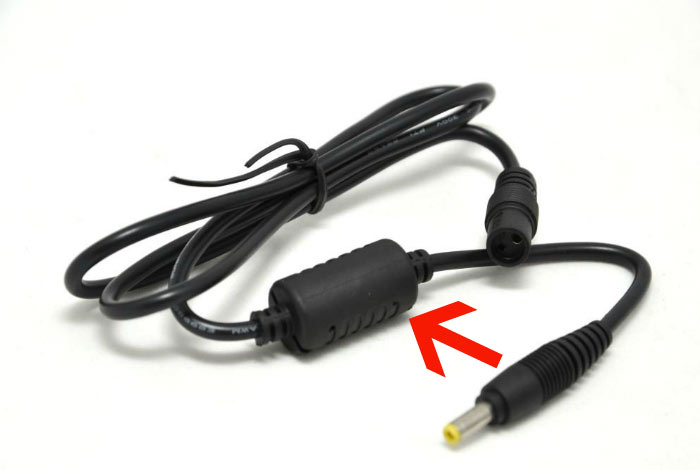 The small cylinder on the charging cord of a laptop is a high-pass filter that neutralizes distortions coming from the supply cable. It is called a ferrite bead.
The small cylinder on the charging cord of a laptop is a high-pass filter that neutralizes distortions coming from the supply cable. It is called a ferrite bead.
13. Strips on the plug
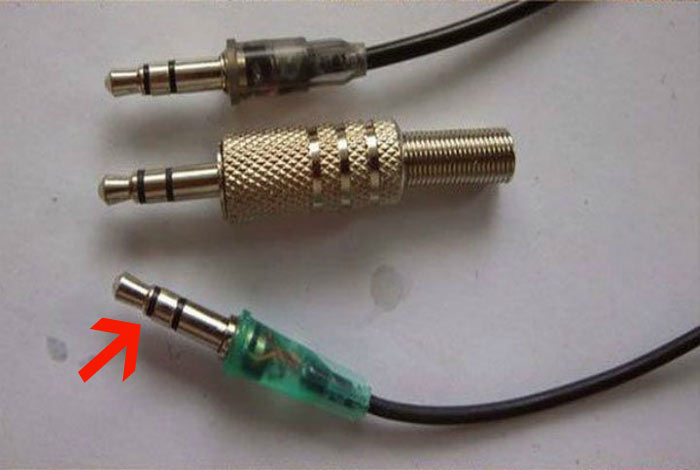 Everyone who uses headphones or speakers, must have paid attention to the strips on the plugs. In fact, these are the strips of insulating material, which allows you to hear music in both headphones.
Everyone who uses headphones or speakers, must have paid attention to the strips on the plugs. In fact, these are the strips of insulating material, which allows you to hear music in both headphones.
14. Strips on iPhone 6
 The plastic strips on iPhone 6 and later models, which outraged many Apple fans, are actually an important functional part of a smartphone, not a designer’s whim. In fact, it conceals antennas, which cannot work under metal.
The plastic strips on iPhone 6 and later models, which outraged many Apple fans, are actually an important functional part of a smartphone, not a designer’s whim. In fact, it conceals antennas, which cannot work under metal.










